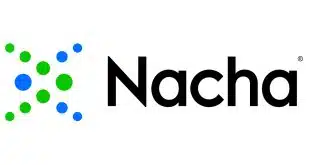A soft economy didn't prevent automated clearing house transaction volumes from growing last year, though the rate of increase slowed, according to new data from NACHA?The Electronic Payments Association. The Herndon, Va.-based governing body of the ACH reports total transactions rose 2.6% to 18.76 billion from 18.29 billion in 2008. Volumes increased 6.9% and 13.2% in 2008 and 2007, respectively. ACH Internet payment codes continued their growth as consumers displayed their increasing preference to pay from their checking accounts without actually writing a check. Combined, the WEB e-check code for debit-based consumer bill payments initiated online and the smaller CIE (customer-initiated entry) code, which generates ACH credits for funds transfers, saw volumes increase nearly 8.8% last year to almost 2.4 billion payments. WEB alone grew 9.7%, though actual transaction totals weren't immediately available. And, confirming analysts' predictions, WEB's volumes have surpassed those of ARC, or accounts-receivable conversion, the e-check code for the conversion to electronic debits of paper checks sent to lockboxes for bill payments (Digital Transactions News, Dec. 9, 2009). A NACHA spokesperson says WEB's fourth-quarter volume exceeded ARC's by 1.1 million transactions. Similarly, fully electronic ACH “native” payments, transactions that are electronic from the start, grew 4.2% last year to 12.19 billion transactions. “Native electronic will continue to grow into the future,” NACHA president and chief executive Janet O. Estep tells Digital Transactions News. Estep says the growth in fully electronic ACH transactions shows that financial institutions are increasingly comfortable with the risk-control measures NACHA has put in place over the past five years to minimize returns. Despite fears expressed by some bankers and consultants about a lurking threat of ACH fraud as the network pursues more one-time and consumer-initiated payments, unauthorized debits, a key measure of fraud, continued to decline last year. ACH debits returned as unauthorized fell 9% from 2008's levels, constituting 0.02% of total network volume and flat with 2008's rate. “Across the board the standard risk indicators we've used in the ACH network … are very, very positive,” says Estep. She cautions, however, that keeping fraud losses low, especially with fully electronic transactions, involves not just NACHA, but the controls banks put into their online-banking and other Internet-facing systems. “We can't operate in a siloed environment,” she says. “Those things are all very separate from the network itself. It's really a different set of practices and that starts with online banking and online treasury management.” Meanwhile, back-office conversion, or BOC, the three-year-old e-check code for checks converted to ACH transactions in the back offices of retailers or their processors, saw volumes more than double last year to 160.5 million transactions, up 105% over 2008. One of the newest BOC adopters is the Texas-based H-E-B grocery-store chain, which has about 300 stores. Volumes on the older point-of-purchase, or POP, e-check code for retailers, grew less than 1%, according to Estep. Particularly surprising in 2009 was the growth in direct deposit, a payment category that derives much of its huge volumes from payroll deposits. Despite an unemployment rate that surpassed 10% late last year, direct-deposit volumes grew 4.9% in 2009 to 4.54 billion payments. Estep attributes part of the increase to the growth in split deposits, such as when an employer deposits part of a paycheck into an employee's checking account and the rest into the employee's savings account. Split deposits count as two transactions. The federal government, which is trying to reduce the number of paper checks it issues for Social Security, tax refunds, and other payments, generated 1.21 billion ACH transactions last year, up 5.5% from 2008. Dollar volume grew 7.2% to $4.29 trillion. The year-end total for the new international ACH transactions (IAT) code was 1.7 million transactions valued at $7.4 billion. IAT went live in September with nine banking days left in the third quarter. NACHA's year-end report includes volumes reported by the ACH switches and large financial institutions, which would include on-us volumes.
Check Also
Affirm Expands Its Credit Reporting to TransUnion
Buy now, pay later platform Affirm Holdings Inc. early Tuesday announced it will begin credit …





